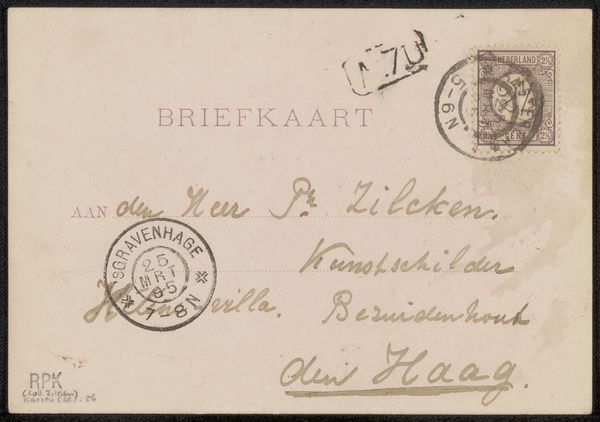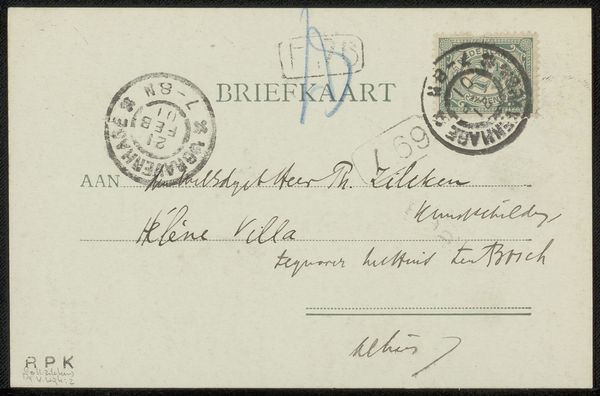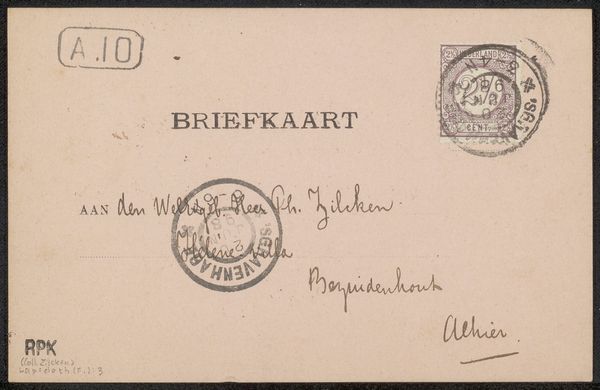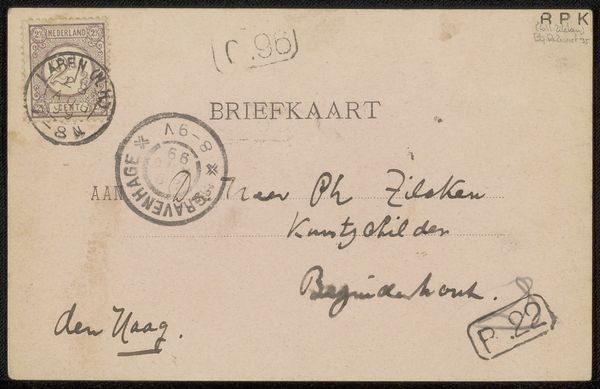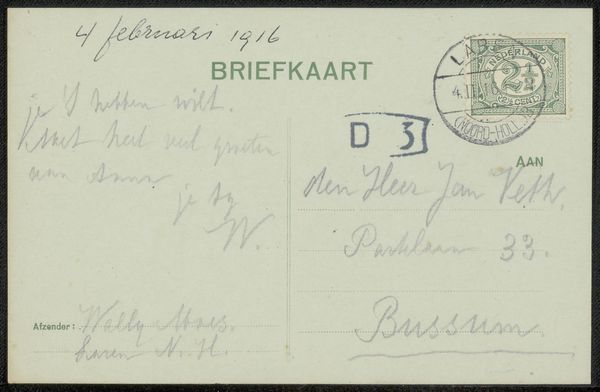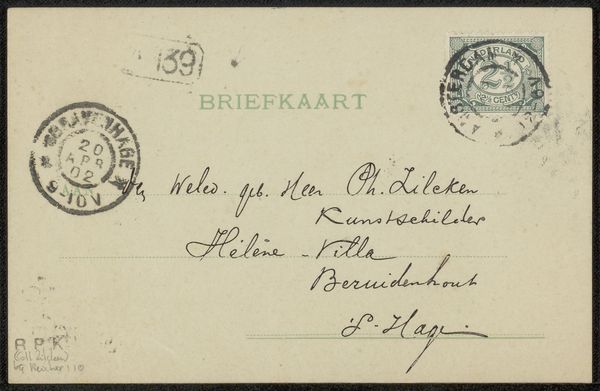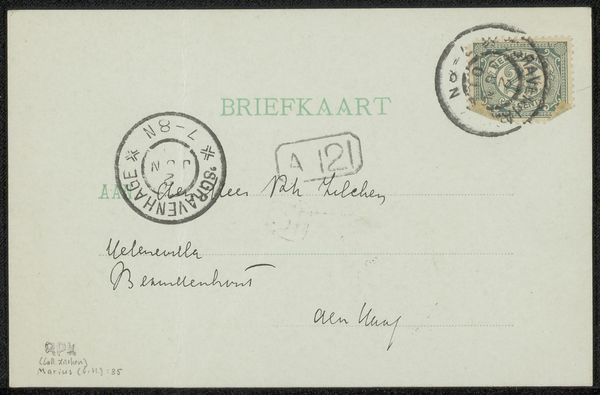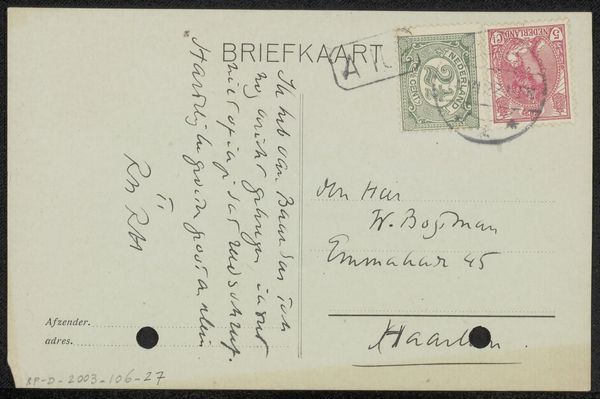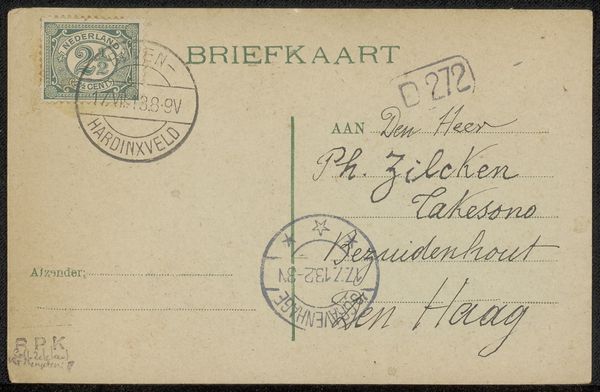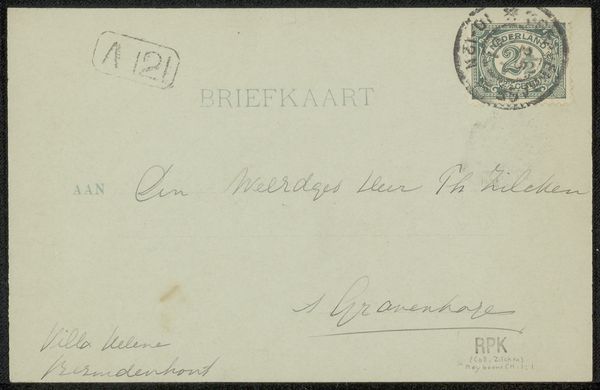
drawing, ink
#
drawing
#
ink
Copyright: Rijks Museum: Open Domain
Curator: Here we have "Briefkaart aan Philip Zilcken" by Grada Hermina Marius. The dating is approximate, sometime between 1901 and 1929. It's a humble piece, ink on a presumably mass-produced card. Editor: There’s a definite sense of immediacy despite the card’s age. It’s tactile; the aged paper, the stampings. It brings a bygone era very close, almost whispering forgotten stories. Curator: Postcards themselves became quite popular in the late 19th and early 20th centuries. A practical tool of communication, yet even now charged with a distinct atmosphere. Note how Marius' handwriting curves elegantly, and is only overshadowed by the rather aggressive postmarks. Editor: Absolutely, the very format carries social and historical baggage. They were agents of globalization and expanded literacy, but simultaneously tools of propaganda during both World Wars. Looking closer, what about the visible postmarks that seems to invade the writing, obscuring some areas? What stories could they be telling, in conjunction with the handwriting. Is it something urgent or routine, sad or filled with joy? Curator: A layering of visual signs, then. It evokes a sense of fleeting moments captured, the past impacting our present. Each stamping, each smeared character… It is rich in what I call unintended symbolism. A visual record of journey, and time’s effect. Editor: It's precisely that tension – the individual reaching out through an increasingly bureaucratic, even surveillant, world. Perhaps there's an echo of the societal tensions around surveillance and privacy that still resonate deeply. The sender trying to connect, whilst their message inevitably passes through so many processes. It also suggests potential tensions of wealth and status in that moment; writing postcards presupposes both spare time and resources, placing the artist and recipient into an elite group with societal standing and wealth. Curator: The very nature of written communication embodies vulnerability. The message has passed through external handling, risking interception. These stampings remind the artist of such political, social forces at play. I'd interpret that as a reminder of transience. It encourages one to contemplate how people find connections within even regulated, or surveyed, systems. Editor: Right. This brief correspondence embodies echoes of agency within structures. It invites us to confront continuities in power and surveillance, reflecting upon our interactions in modern-day society.
Comments
No comments
Be the first to comment and join the conversation on the ultimate creative platform.
